Conus (Leptoconus) castaneofasciatus Dautzenberg, 1937
+23
Eugène † 11/12/2023
Marc M
Tengu84
STROMBI
Celou83
MITRIDAE
Boutillier Michel
Patrick MARTI
Bernard Clavé †
Christophe ROUX
Rhum3389
Omaria
Vinot William
Thierry VULLIET
Gilbert Jaux
Marmotta74
Dam's
Gauguini
LETERRIER Franck
Guy-gerard
HENRI.13090
Zonatus
Whiteshark
27 participants
Page 1 sur 3 • 1, 2, 3 

 Conus (Leptoconus) castaneofasciatus Dautzenberg, 1937
Conus (Leptoconus) castaneofasciatus Dautzenberg, 1937
Mar 5 Jan 2010 - 11:45
 Conus amadis castaneofasciatus (Leptoconus) - Gmelin, 1791
Conus amadis castaneofasciatus (Leptoconus) - Gmelin, 1791
Mer 6 Jan 2010 - 1:42
vous aurez remarque la forme noire du conus amadis castaneofasciatus. Qui peut me donner plus d'infos a ce sujet ?
J'ai entendu parler de forme "sktech" ?
Et le "Glory of Bengal" dans tout ca, il est ou ?
C'est le nom donne aux Bengalensis en comparaison avec les Gloria-Maris.
Ces deux cones ont longtemps etaient consideres comme le top du top en matiere de collection, avant qu'ils ne soient peches en quantite et que leur valeur ne s'effondre.
On remarquera tout de meme que les beaux specimens de grande tailles se negocient toujours tres bien et sont toujours recherches par les collectionneurs.
Essayez de trouver un Bengalensis de plus de 130mm, vous verrez que ca ne court pas les rues !
Idem pour un GLoria Maris de plus de 150mm.
A+Vincent
J'ai entendu parler de forme "sktech" ?
Et le "Glory of Bengal" dans tout ca, il est ou ?
C'est le nom donne aux Bengalensis en comparaison avec les Gloria-Maris.
Ces deux cones ont longtemps etaient consideres comme le top du top en matiere de collection, avant qu'ils ne soient peches en quantite et que leur valeur ne s'effondre.
On remarquera tout de meme que les beaux specimens de grande tailles se negocient toujours tres bien et sont toujours recherches par les collectionneurs.
Essayez de trouver un Bengalensis de plus de 130mm, vous verrez que ca ne court pas les rues !
Idem pour un GLoria Maris de plus de 150mm.
A+Vincent
 Re: Conus (Leptoconus) castaneofasciatus Dautzenberg, 1937
Re: Conus (Leptoconus) castaneofasciatus Dautzenberg, 1937
Lun 31 Mai 2010 - 18:59
Whiteshark a écrit:vous aurez remarque la forme noire du conus amadis castaneofasciatus. Qui peut me donner plus d'infos a ce sujet ?
J'ai entendu parler de forme "sktech" ?
Bonjour,
Certains vendeurs utilisent en effet le nom schech pour cette forme sombre de Conus amadis f. castaneofasciata Dautzenberg, 1937. Je ne sais pas qui a commencé mais évidemment, la nature ayant horreur du vide et les collectionneurs des coquilles sans nom, tout le monde a suivi. Pourtant Conus schech Weinkauff, 1873 n'a rien à voir : c'est un synonyme de Conus locumtenens Blumenbach, 1791, une espèce de plus endémique à la Mer Rouge alors que Conus amadis f. castaneofasciata provient de Thailande et des environs.
A+
Bruno
 castaneofasciatus
castaneofasciatus
Mar 1 Juin 2010 - 22:10
Merci Bruno pour ces precisions. En effet il y a beaucoup de noms qui ont ete attribues a de simples formes de couleurs mais qui n'ont pas fait l'objet d'une description et d'une etude rigoureuse.
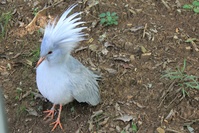 HENRI.13090Assidu
HENRI.13090Assidu
- Messages : 4245
Date d'inscription : 27/09/2010
Age : 79
Localisation : Aix-en-Provence
 Re: Conus (Leptoconus) castaneofasciatus Dautzenberg, 1937
Re: Conus (Leptoconus) castaneofasciatus Dautzenberg, 1937
Ven 10 Déc 2010 - 15:17
En voilà un des Indes
Conus amadis castaneofasciatus - (Dautzenberg,1937)- 81,4mm - Inde
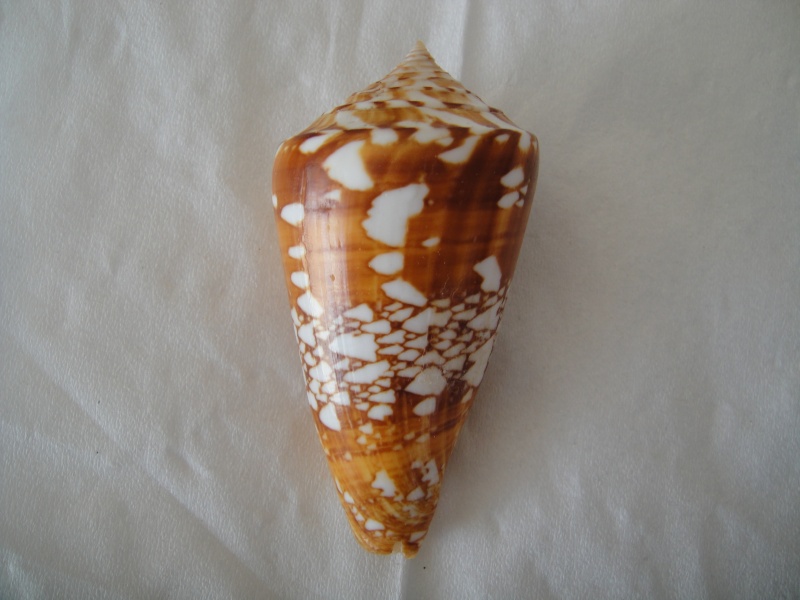

Conus amadis castaneofasciatus - (Dautzenberg,1937)- 81,4mm - Inde


 Re: Conus (Leptoconus) castaneofasciatus Dautzenberg, 1937
Re: Conus (Leptoconus) castaneofasciatus Dautzenberg, 1937
Ven 10 Déc 2010 - 18:53
Conus amadis castaneofasciatus ou castaneofasciata?????
 HENRI.13090Assidu
HENRI.13090Assidu
- Messages : 4245
Date d'inscription : 27/09/2010
Age : 79
Localisation : Aix-en-Provence
 Re: Conus (Leptoconus) castaneofasciatus Dautzenberg, 1937
Re: Conus (Leptoconus) castaneofasciatus Dautzenberg, 1937
Ven 10 Déc 2010 - 22:36
Conus amadis f.castaneofasciatus
_________________
L' ennui dans ce monde, c' est que les idiots sont sûrs d' eux et les gens sensés pleins de doutes.
 Re: Conus (Leptoconus) castaneofasciatus Dautzenberg, 1937
Re: Conus (Leptoconus) castaneofasciatus Dautzenberg, 1937
Sam 11 Déc 2010 - 9:34
pourquoi ?
 HENRI.13090Assidu
HENRI.13090Assidu
- Messages : 4245
Date d'inscription : 27/09/2010
Age : 79
Localisation : Aix-en-Provence
 Re: Conus (Leptoconus) castaneofasciatus Dautzenberg, 1937
Re: Conus (Leptoconus) castaneofasciatus Dautzenberg, 1937
Mer 22 Déc 2010 - 17:48
En fait,à mon avis, Amadis var.castaneofasciatus,Dautzerberg, 1937 et var. castaneofasciata = c'est la même chose. Le terme le plus employé est castaneofasciatus qui répond à la définition du WORMS. La variété castaneofasciatus est trouvée vers le golfe du Bengale, Thailande, et Birmanie ( et peut-être ailleurs). Les formes des coquilles sont pour ainsi dire identiques, seule la coloration est différente.
Est-ce que les animaux sont de la même couleur ? That is the question ? Il faudrait que les scientifiques et spécialistes en la matière font un tri sérieux pour améliorer les identifications avec une étude ADN. Celà serait beaucoup plus clair et simplifierait énormément la situation. Ce n'est pas facile de se faire une opinion exacte.
C'est déjà assez compliqué à l'heure actuelle.
Est-ce que les animaux sont de la même couleur ? That is the question ? Il faudrait que les scientifiques et spécialistes en la matière font un tri sérieux pour améliorer les identifications avec une étude ADN. Celà serait beaucoup plus clair et simplifierait énormément la situation. Ce n'est pas facile de se faire une opinion exacte.
C'est déjà assez compliqué à l'heure actuelle.
 Re: Conus (Leptoconus) castaneofasciatus Dautzenberg, 1937
Re: Conus (Leptoconus) castaneofasciatus Dautzenberg, 1937
Mer 22 Déc 2010 - 19:42
Sur google:
2700 résultats pour castaneofasciata
1500 pour castaneofasciatus
Que nous dit Gilbert pour la bonne orthographe???
2700 résultats pour castaneofasciata
1500 pour castaneofasciatus
Que nous dit Gilbert pour la bonne orthographe???
 Re: Conus (Leptoconus) castaneofasciatus Dautzenberg, 1937
Re: Conus (Leptoconus) castaneofasciatus Dautzenberg, 1937
Sam 4 Juin 2011 - 9:11
La forme dite ''schech'': 44 mm.



Voici ce qu' en disait le Dr. Röckel en November 1978 dans HAWAIIAN SHELL NEWS
By DIETER ROCKEL
DARMSTADT - Not long ago I received a very interesting cone from the Bay of Bengal, bearing the name ''Conus schech Jickeli." My subsequent attempt to verify the name led me to a prize example of "conus confusion. " My new shell closely resembled western Thailand's castaneofasciatus Sowerby in shape, but differed distinctly in color and pattern. Except foc an interrupted white band in the middle of the last whorl, it is almost uniformly dark red-brown. The lower part is a lighter shade of the same color. Along the spire edge is a white band, very small, crossed by irregular brown lines. The spire is the same color, with whitish half-moon dots. My own collection includes a shell called Conus schech from an old collection. Naturally, I took the opportunity to compare it with my new acquisition. The two were not at all alike! My efforts to clear up the seeming discrepancy led me into a wonderland of taxonomic contradictions. Although I believe I now understand the history of this bit of Conus Confusion, I am not sure that anyone is any better off!
Point One: The name "Conus schech Jickeli" apparently was never validly proposed. Carl F. Jickeli, the Austrian zoological explorer of the mid-nineteenth century, bought two unusual cones from local fishermen on the Dahlak Islands during his Red Sea expedition. He described them under the name of "Conus schech" in an unpublished account of his travels. He turned the manuscript over to H. C. Weinkauff who included the description in his Systematisches Conchylien-Cabinet of 1875. Weinkauff called the new shells ''Conus schech Jickeli''. The action leaves the species in a tenuous position. Since Jickeli was not the author of the publication, under ICZN rules he could not properly have his name on the species. Weinkauff should be credited. The proper name, therefore, would be Conus schech Weinkauff or, as some would have it, C. schech "Jickeli" Weinkauff. But not "C. schech Jickeli." Incidentally, in describing the new cone, Weinkauff erroneously specified Massawa (in modern Eritrea) as its locality. This was later corrected to Dahlak Islands by Jickeli himself.
Point Two: Weinkauff's illustrations (Taf. 37, Figs. 9 and 10) show a cone that is similar in every way to my specimen from the old collection. The shape is not that of C. amadis but of C. acumillatus. This is reasonable, since the true C. schech came from the southern Red Sea, an area to which C. acuminatus is endemic but in which no forms of C. amadis have ever been found. Unlike the typical C. acuminatus, the C. schech has no tent markings. Instead it has a network of very fine longitudinal lines. The difference is comparable to C. textile vs C. eumitus. I have not decided to my own satisfaction whether C. schech is anything more than a variation of pattern within a population of C. acuminatus or is a subspecies. At any rate, it does not appear to be a valid species. I propose tentatively to call it "Conus acuminatus schech (Weinkauff, 1875)."
Point Three. What about the new specimen from the Bay of Bengal, alsocailed C. schech? Let us go back to Weinkauff. Before publishing Systematisches Coochylien-Cabinet in 1875, Weinkauff naturally examined the literature. In Kiener (page 133 T. 99 f. 5) he found a species labelled Conus neptunus Reeve. Weinkauff recognized at once that Kiener's figure did not match Reeve's description of C. neptunus. The two represented separate species. Then Weinkauff made a mistake of his own. He identified his new C. schech with Kiener's C. neptunus. True, there is a certain similarity, but the differences are obvious. From the figure, Kiener's C. neptunus is without doubt the same species as my new shell from the Bay of Bengal and apparently is a variation of C. amadis. For convenience, I will call this shell ''Conus amadis neptunus ( Kiener, 1843)."
Point Four. We are not yet at the end of this voyage of discovery. In his Thesaurus Vol. V, 1887, G. B. Sowerby identified C. schech with C. amadis, referring 10 Vol. III, Fig. 171 (1858). But the latter figure is not the same as Kiener's figure of C. neptunus. It is very similar to the shell later described as C. schech. Tryon, in his Manual or Conchology (1884) declared (correctly, in my opinion): ''C. schech is perhaps only an extreme variety of C. acuminatus Hwass." In his next sentence, however, he confuses things again by writing. 'It is the neptunus of Kiener (not Reeve)." Then, to carry the confusion to extremes, he illustrates his statement with Kiener's amadis figure instead of the figures of Weinkauff or Jickeli. The name Conus schech seems to disappear from the literature at that point. More recent works, such as Marsh & Rippingale's Cone Shells of the World and Abbott & Wagner's Standard Catalog ignore it. But now, suddenly, it returns to the repertoire of species names. Specimens are becoming available. Soon, I am sure, it will be on dealers' lists. Is it too late to correct this hundred-year-old error?



Voici ce qu' en disait le Dr. Röckel en November 1978 dans HAWAIIAN SHELL NEWS
By DIETER ROCKEL
DARMSTADT - Not long ago I received a very interesting cone from the Bay of Bengal, bearing the name ''Conus schech Jickeli." My subsequent attempt to verify the name led me to a prize example of "conus confusion. " My new shell closely resembled western Thailand's castaneofasciatus Sowerby in shape, but differed distinctly in color and pattern. Except foc an interrupted white band in the middle of the last whorl, it is almost uniformly dark red-brown. The lower part is a lighter shade of the same color. Along the spire edge is a white band, very small, crossed by irregular brown lines. The spire is the same color, with whitish half-moon dots. My own collection includes a shell called Conus schech from an old collection. Naturally, I took the opportunity to compare it with my new acquisition. The two were not at all alike! My efforts to clear up the seeming discrepancy led me into a wonderland of taxonomic contradictions. Although I believe I now understand the history of this bit of Conus Confusion, I am not sure that anyone is any better off!
Point One: The name "Conus schech Jickeli" apparently was never validly proposed. Carl F. Jickeli, the Austrian zoological explorer of the mid-nineteenth century, bought two unusual cones from local fishermen on the Dahlak Islands during his Red Sea expedition. He described them under the name of "Conus schech" in an unpublished account of his travels. He turned the manuscript over to H. C. Weinkauff who included the description in his Systematisches Conchylien-Cabinet of 1875. Weinkauff called the new shells ''Conus schech Jickeli''. The action leaves the species in a tenuous position. Since Jickeli was not the author of the publication, under ICZN rules he could not properly have his name on the species. Weinkauff should be credited. The proper name, therefore, would be Conus schech Weinkauff or, as some would have it, C. schech "Jickeli" Weinkauff. But not "C. schech Jickeli." Incidentally, in describing the new cone, Weinkauff erroneously specified Massawa (in modern Eritrea) as its locality. This was later corrected to Dahlak Islands by Jickeli himself.
Point Two: Weinkauff's illustrations (Taf. 37, Figs. 9 and 10) show a cone that is similar in every way to my specimen from the old collection. The shape is not that of C. amadis but of C. acumillatus. This is reasonable, since the true C. schech came from the southern Red Sea, an area to which C. acuminatus is endemic but in which no forms of C. amadis have ever been found. Unlike the typical C. acuminatus, the C. schech has no tent markings. Instead it has a network of very fine longitudinal lines. The difference is comparable to C. textile vs C. eumitus. I have not decided to my own satisfaction whether C. schech is anything more than a variation of pattern within a population of C. acuminatus or is a subspecies. At any rate, it does not appear to be a valid species. I propose tentatively to call it "Conus acuminatus schech (Weinkauff, 1875)."
Point Three. What about the new specimen from the Bay of Bengal, alsocailed C. schech? Let us go back to Weinkauff. Before publishing Systematisches Coochylien-Cabinet in 1875, Weinkauff naturally examined the literature. In Kiener (page 133 T. 99 f. 5) he found a species labelled Conus neptunus Reeve. Weinkauff recognized at once that Kiener's figure did not match Reeve's description of C. neptunus. The two represented separate species. Then Weinkauff made a mistake of his own. He identified his new C. schech with Kiener's C. neptunus. True, there is a certain similarity, but the differences are obvious. From the figure, Kiener's C. neptunus is without doubt the same species as my new shell from the Bay of Bengal and apparently is a variation of C. amadis. For convenience, I will call this shell ''Conus amadis neptunus ( Kiener, 1843)."
Point Four. We are not yet at the end of this voyage of discovery. In his Thesaurus Vol. V, 1887, G. B. Sowerby identified C. schech with C. amadis, referring 10 Vol. III, Fig. 171 (1858). But the latter figure is not the same as Kiener's figure of C. neptunus. It is very similar to the shell later described as C. schech. Tryon, in his Manual or Conchology (1884) declared (correctly, in my opinion): ''C. schech is perhaps only an extreme variety of C. acuminatus Hwass." In his next sentence, however, he confuses things again by writing. 'It is the neptunus of Kiener (not Reeve)." Then, to carry the confusion to extremes, he illustrates his statement with Kiener's amadis figure instead of the figures of Weinkauff or Jickeli. The name Conus schech seems to disappear from the literature at that point. More recent works, such as Marsh & Rippingale's Cone Shells of the World and Abbott & Wagner's Standard Catalog ignore it. But now, suddenly, it returns to the repertoire of species names. Specimens are becoming available. Soon, I am sure, it will be on dealers' lists. Is it too late to correct this hundred-year-old error?
 HENRI.13090Assidu
HENRI.13090Assidu
- Messages : 4245
Date d'inscription : 27/09/2010
Age : 79
Localisation : Aix-en-Provence
 Conus Amadis f.castaneofasciata
Conus Amadis f.castaneofasciata
Sam 13 Aoû 2011 - 9:40
Conus Amadis f.schech Weinkauff, 1873 (Thailande-56mm)...... assez rare .....
nom accepté Conus Locumtensis. Répartition W.Thailande et vivant entre 60 et 80 mètres de profondeur.


nom accepté Conus Locumtensis. Répartition W.Thailande et vivant entre 60 et 80 mètres de profondeur.


 Re: Conus (Leptoconus) castaneofasciatus Dautzenberg, 1937
Re: Conus (Leptoconus) castaneofasciatus Dautzenberg, 1937
Dim 14 Aoû 2011 - 19:21
henri luchesi a écrit:Conus Amadis f.schech Weinkauff, 1873 (Thailande-56mm)...... assez rare .....
nom accepté Conus Locumtensis. Répartition W.Thailande et vivant entre 60 et 80 mètres de profondeur.
Bonjour Henri,
En réalité c'est une variation sans nom de Conus amadis f. castaneofasciata. "Schech" est une appellation erronée plus ou moins volontairement employée par les vendeurs. Le vrai Conus schech Weinkauff, 1875 est un synonyme du Conus locumtenens Blumenbach, 1791 que l'on trouve notamment vers Djibouti, Aden, etc.
Cette forme était effectivement assez rare mais il semblerait qu'une population abondante ait été trouvée à la frontière Thaïlande / Birmanie et soit largement pêchée.
 Re: Conus (Leptoconus) castaneofasciatus Dautzenberg, 1937
Re: Conus (Leptoconus) castaneofasciatus Dautzenberg, 1937
Lun 15 Aoû 2011 - 10:34
Ah non Henri, il faut plutôt mettre Conus amadis f. castaneofasciata !
 HENRI.13090Assidu
HENRI.13090Assidu
- Messages : 4245
Date d'inscription : 27/09/2010
Age : 79
Localisation : Aix-en-Provence
 Re: Conus (Leptoconus) castaneofasciatus Dautzenberg, 1937
Re: Conus (Leptoconus) castaneofasciatus Dautzenberg, 1937
Lun 15 Aoû 2011 - 11:02
ok, je te remercie pour ce modifiatif important à mes yeux et à+
Conus Amadis f.castaneofasciata Dautzenberg, 1937 .......
Conus Amadis f.castaneofasciata Dautzenberg, 1937 .......
_________________
L' ennui dans ce monde, c' est que les idiots sont sûrs d' eux et les gens sensés pleins de doutes.
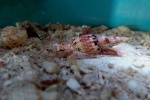 LETERRIER FranckExpert
LETERRIER FranckExpert- Messages : 3167
Date d'inscription : 27/02/2010
Age : 55
Localisation : Bourail Nouvelle-caledonie
 cone amadis f.castaneofasciata "Sowerby"Dautzenberg,Ph.,1937
cone amadis f.castaneofasciata "Sowerby"Dautzenberg,Ph.,1937
Lun 17 Oct 2011 - 3:31
je vient de récupérer ce cone mais sans taxon ni provenance
si qqu'un a une idée
il mesure 64mm


si qqu'un a une idée
il mesure 64mm


 Re: Conus (Leptoconus) castaneofasciatus Dautzenberg, 1937
Re: Conus (Leptoconus) castaneofasciatus Dautzenberg, 1937
Lun 17 Oct 2011 - 4:17
Ca ressemble a un Conus amadis...(Inde)
 LETERRIER FranckExpert
LETERRIER FranckExpert- Messages : 3167
Date d'inscription : 27/02/2010
Age : 55
Localisation : Bourail Nouvelle-caledonie
 Re: Conus (Leptoconus) castaneofasciatus Dautzenberg, 1937
Re: Conus (Leptoconus) castaneofasciatus Dautzenberg, 1937
Lun 17 Oct 2011 - 4:27
Ah oui Gauguini tu as raison!!
j'ai l'impression que c'est la forme "aurantia"
en tout cas amadis déjà ça c'est sur!!
merci
j'ai l'impression que c'est la forme "aurantia"
en tout cas amadis déjà ça c'est sur!!
merci

 Dam'sAssidu
Dam'sAssidu
- Messages : 2462
Date d'inscription : 25/01/2011
Age : 41
Localisation : Tahiti
 Re: Conus (Leptoconus) castaneofasciatus Dautzenberg, 1937
Re: Conus (Leptoconus) castaneofasciatus Dautzenberg, 1937
Lun 17 Oct 2011 - 5:18


ou castaneofasciatus ??? Qu'en penses tu ? celui ci fait 43 mm.
 Re: Conus (Leptoconus) castaneofasciatus Dautzenberg, 1937
Re: Conus (Leptoconus) castaneofasciatus Dautzenberg, 1937
Lun 17 Oct 2011 - 9:19
Hello,
Ce sont des Conus amadis f. castaneofasciata Dautzenberg, 1937, probablement de Thaïlande.
Ce sont des Conus amadis f. castaneofasciata Dautzenberg, 1937, probablement de Thaïlande.
 LETERRIER FranckExpert
LETERRIER FranckExpert- Messages : 3167
Date d'inscription : 27/02/2010
Age : 55
Localisation : Bourail Nouvelle-caledonie
 Re: Conus (Leptoconus) castaneofasciatus Dautzenberg, 1937
Re: Conus (Leptoconus) castaneofasciatus Dautzenberg, 1937
Lun 17 Oct 2011 - 9:26
Merci les gars :!: 

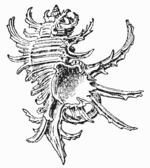 Marmotta74Assidu
Marmotta74Assidu
- Messages : 542
Date d'inscription : 08/02/2011
Age : 66
Localisation : Haute Savoie
 Re: Conus (Leptoconus) castaneofasciatus Dautzenberg, 1937
Re: Conus (Leptoconus) castaneofasciatus Dautzenberg, 1937
Lun 17 Oct 2011 - 10:11
Pourquoi mettre "castaneofasciata" qui est du genre feminin pour un "Conus" du genre masculin ?
ne serait-il pas plus logique d'utiliser le mot castaneofasciatus........................................
ne serait-il pas plus logique d'utiliser le mot castaneofasciatus........................................
 Re: Conus (Leptoconus) castaneofasciatus Dautzenberg, 1937
Re: Conus (Leptoconus) castaneofasciatus Dautzenberg, 1937
Lun 17 Oct 2011 - 10:19
Excellente question, d'autant que les deux sont employés.
Il faudrait demander à Dautzenberg, mais il est un peu mort...
Il faudrait demander à Dautzenberg, mais il est un peu mort...
 Re: Conus (Leptoconus) castaneofasciatus Dautzenberg, 1937
Re: Conus (Leptoconus) castaneofasciatus Dautzenberg, 1937
Lun 17 Oct 2011 - 16:55
La f. est du genre féminin!!!
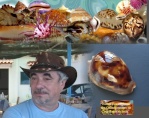 Gilbert JauxAssidu
Gilbert JauxAssidu
- Messages : 2960
Date d'inscription : 02/03/2010
Age : 77
Localisation : Ile de France/Grèce
 Re: Conus (Leptoconus) castaneofasciatus Dautzenberg, 1937
Re: Conus (Leptoconus) castaneofasciatus Dautzenberg, 1937
Lun 17 Oct 2011 - 17:11
Normalement tout s'accorde avec le genre.
_________________
Votre véritable ami est celui qui ne vous passe rien et vous pardonne tout
Page 1 sur 3 • 1, 2, 3 

Permission de ce forum:
Vous ne pouvez pas répondre aux sujets dans ce forum





